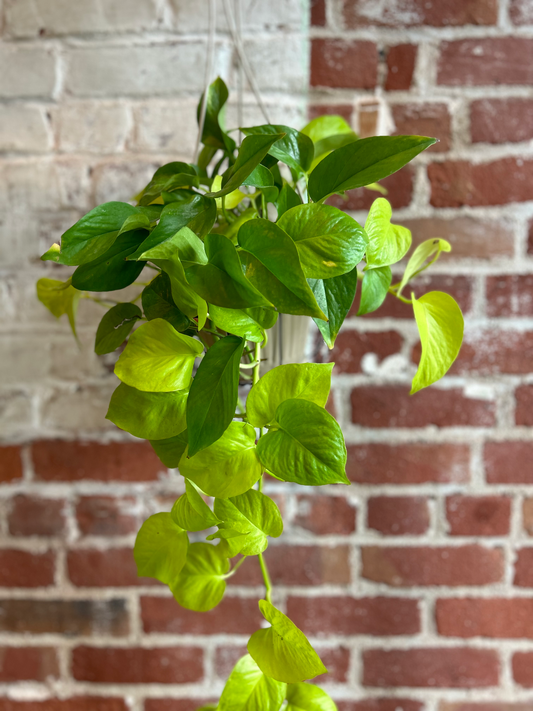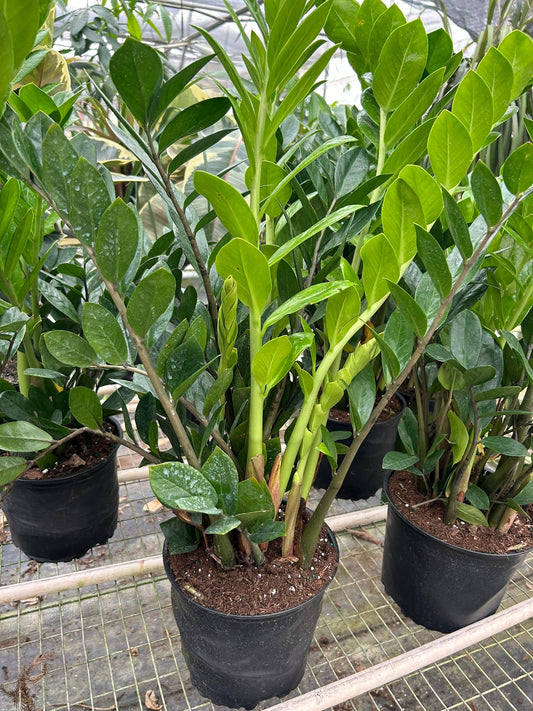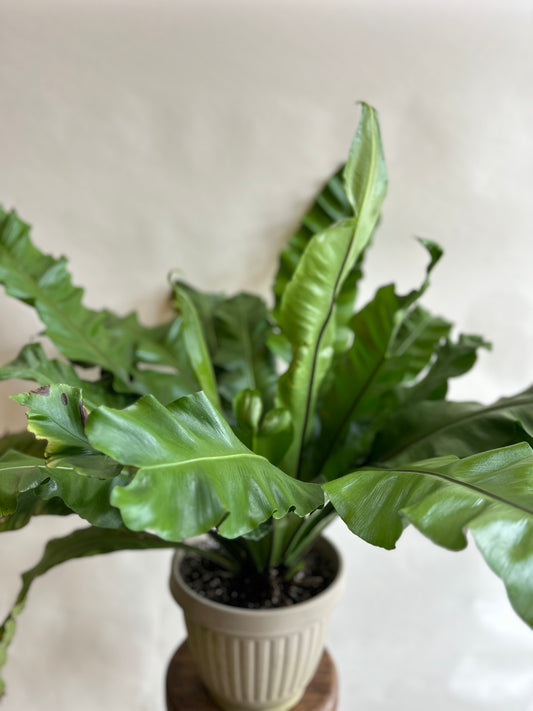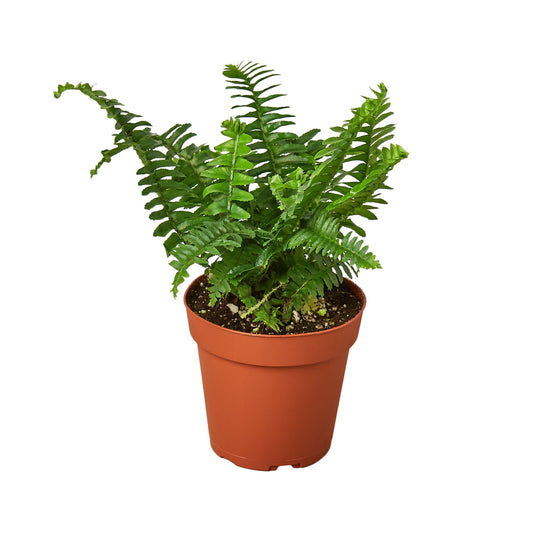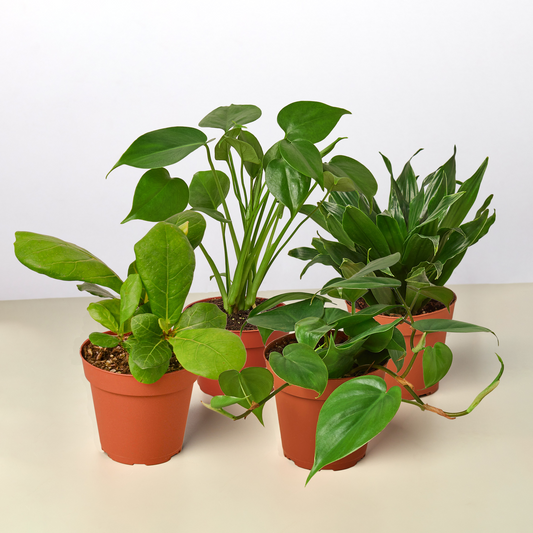What is the Best Soil Type for ZZ Plants?
Cafe Planta Team
ZZ plants, known for their glossy leaves and low-maintenance nature, have become a favorite among plant lovers. But even the hardiest houseplants need the right environment to truly thrive. One key element in creating that perfect home? The soil. Yes, the stuff that's usually hidden beneath the surface plays a big role in your ZZ plant's health.
In this article, we're going to talk all about the best soil types for ZZ plants. We'll cover what makes ZZ plants tick, their natural habitat, and how to recreate that environment in your home. We'll also dive into the components of soil mixes, how to pot your ZZ plant, and much more. Whether you're a seasoned plant parent or just starting, you'll find helpful tips here to keep your ZZ plant happy and healthy.
Understanding the ZZ Plant's Natural Habitat
To figure out what type of soil is best for ZZ plants, it helps to understand where they come from. Native to Eastern Africa, these plants are accustomed to environments that don’t retain too much moisture. This means they're used to soil that drains well, allowing them to withstand periods of drought. In their natural habitat, ZZ plants grow in rocky, well-drained soils that don’t hold onto water for long.
Imagine the dry, arid regions of Africa, where water is scarce, and the soil is anything but rich and loamy. ZZ plants have evolved to thrive in these conditions, which is why they do so well in homes where they can sometimes miss a watering or two. Understanding this can help us replicate similar conditions with the right potting mix.
So, what does this mean for you as a plant parent? It means your ZZ plant doesn't want to sit in soggy soil. The goal is to provide a potting mix that mimics its natural, well-draining conditions. This will not only keep your plant healthy but also prevent root rot, a common issue when ZZ plants are overwatered.
The Importance of Well-Draining Soil
If there's one golden rule for ZZ plants, it's to avoid overwatering. These plants are adapted to dry environments and can go without water for weeks. Their rhizomes, which are thick, potato-like structures, store water much like a camel's hump. However, when the soil retains too much moisture, it can lead to root rot. A well-draining soil prevents this by allowing excess water to flow out, ensuring the roots have access to air.
Think of it this way: well-draining soil is like a breathable, lightweight sweater for your plant. It provides comfort and protection without trapping too much heat or moisture. When choosing or mixing soil, aim for something that allows water to pass through easily. This way, you're minimizing the risk of root rot and fostering a healthier environment for your ZZ plant.
Common ingredients in well-draining soils include perlite, sand, and bark. Each of these components helps improve aeration and drainage. By including them in your soil mix, you're essentially creating a habitat where your ZZ plant can thrive, just like in its native environment.
Components of an Ideal Soil Mix
Now that we know ZZ plants need well-draining soil, let's break down what goes into making the perfect mix. You can either buy a commercial potting mix or create your own. Regardless of your choice, understanding the components will help you ensure your plant has the best possible environment.
- Perlite: This is a lightweight, volcanic glass that improves soil aeration and drainage. It's often used in potting mixes to help prevent soil compaction.
- Sand: Coarse sand can be added to increase drainage. It's essential to use horticultural sand, not the type found on beaches, which can be too fine.
- Bark: Pine bark or orchid bark helps with drainage and adds organic matter as it breaks down.
- Cactus or Succulent Mix: These pre-mixed options are often well-draining and can be a convenient choice for ZZ plants.
Each of these components contributes to creating a soil that mimics the ZZ plant's natural environment. When mixing your own soil, a good rule of thumb is to use two parts perlite, one part sand, and one part bark. This combination should provide adequate drainage while retaining enough moisture for the plant's needs.
Potting Your ZZ Plant
Once you have the right soil mix, it's time to pot your ZZ plant. The type of pot you choose is almost as important as the soil itself. Go for a pot with drainage holes at the bottom. This ensures excess water can escape, preventing your plant from sitting in waterlogged soil.
Here's a step-by-step guide to potting your ZZ plant:
- Choose a pot that's about one size larger than your plant's current pot. This gives the roots room to grow without overwhelming them with too much soil.
- Add a layer of pebbles or stones at the bottom of the pot to improve drainage further.
- Fill the pot halfway with your well-draining soil mix.
- Gently remove your ZZ plant from its current pot, being careful not to damage the roots.
- Place the plant in the new pot, ensuring the top of the root ball is level with the soil surface.
- Fill in the sides with more soil, pressing gently to eliminate air pockets.
- Water the plant lightly to help the soil settle, but ensure the water drains well.
With the right potting technique and soil, your ZZ plant will be set up for success. Now, let's explore how to maintain this setup for optimal growth.
Watering Your ZZ Plant Correctly
We've talked a lot about the importance of well-draining soil, but what about watering? Getting the watering schedule right is just as crucial. ZZ plants are drought-tolerant, meaning they prefer to dry out between waterings. So, how do you know when it's time to water?
A good rule of thumb is to wait until the top inch or two of soil feels dry to the touch. Stick your finger into the soil, and if it feels dry, it's time to water. If it's still a bit moist, give it a few more days before checking again.
When you do water, do so thoroughly. Allow the water to flow through the soil and out the drainage holes. This ensures that the entire root system receives moisture while preventing water from pooling at the bottom of the pot. Remember, overwatering is one of the most common ways to harm a ZZ plant, so err on the side of under-watering if you're unsure.
In the winter months, when growth slows down, you can water even less frequently. ZZ plants go into a sort of dormancy during colder months, requiring less water and nutrients.
Signs Your ZZ Plant Needs Soil Adjustment
Even with the best intentions, sometimes our plants give us signs that something isn't quite right. If your ZZ plant starts to look a bit off, it might be time to revisit its soil needs. Here are some signs that your ZZ plant might need a soil adjustment:
- Yellowing Leaves: This can indicate overwatering. Check if the soil is retaining too much moisture and adjust your watering schedule or soil mix accordingly.
- Root Rot: If you notice a foul smell or mushy roots when repotting, your plant might be suffering from root rot due to poor drainage.
- Slow Growth: While ZZ plants are slow growers, particularly sluggish growth could mean the plant isn't getting the nutrients it needs. Ensure your soil mix is balanced and consider adding a slow-release fertilizer.
Addressing these issues promptly can help your ZZ plant bounce back. Adjusting the soil or watering habits can often solve these problems, so pay attention to what your plant is telling you.
Fertilizing Your ZZ Plant
Fertilizing is another important aspect of ZZ plant care, although it's not as critical as soil and watering. ZZ plants don't require a lot of extra nutrients, but a little boost during the growing season can promote healthier growth.
In the spring and summer, consider using a balanced, water-soluble fertilizer every 4-6 weeks. Dilute it to half-strength to avoid over-fertilizing, which can lead to salt buildup and damage the roots. During the fall and winter, it's best to hold off on fertilizing, as the plant's growth naturally slows down.
If you're using a pre-mixed potting soil, check if it already contains fertilizer. Some mixes come with added nutrients, so you might not need to fertilize as often. Always follow the instructions on the fertilizer package, and when in doubt, err on the side of caution to avoid over-fertilizing.
Common Soil-Related Issues and Solutions
Even with the best care, issues can arise. Here are some common soil-related problems you might encounter with your ZZ plant and how to address them:
- Compacted Soil: Over time, soil can become compacted, reducing aeration and drainage. If you notice this, consider repotting your plant with fresh soil or gently aerating the existing soil with a fork.
- Pest Infestations: Gnats and other pests can sometimes be attracted to overly moist soil. Ensure your soil drains well and only water when necessary to minimize this risk.
- Nutrient Deficiencies: If your plant shows signs of nutrient deficiency, such as pale leaves or stunted growth, you might need to adjust your fertilizing routine or check the soil's pH level.
Troubleshooting these issues can help keep your ZZ plant in top condition. Regularly checking soil moisture and the plant's overall health will make it easier to catch problems before they escalate.
Creating a Plant-Filled Space with ZZ Plants
Now that you're armed with knowledge about soil and ZZ plant care, let's talk about how to incorporate these beauties into your home. ZZ plants are incredibly versatile, making them perfect for a variety of settings. They thrive in low-light conditions, so they're ideal for spots where other plants might struggle.
Consider placing your ZZ plant in:
- Living Rooms: Add a touch of greenery to your living space by placing a ZZ plant near a window with indirect light. Its glossy leaves will brighten up the room and create a cozy atmosphere.
- Bathrooms: ZZ plants can tolerate humidity, making them a great choice for bathrooms with limited natural light.
- Offices: Bring some life to your workspace with a ZZ plant. Its air-purifying qualities can improve the environment and boost your mood.
When arranging ZZ plants in your home, consider their aesthetic appeal. Their upright growth habit adds a modern touch, and they pair well with a variety of decorative styles. Mix and match pots and planters to create a cohesive look, and don't be afraid to experiment with different placements until you find the perfect spot.
Final Thoughts
In summary, providing the right soil for your ZZ plant is crucial for its health and growth. By choosing a well-draining mix and following proper watering and care techniques, you can ensure your plant thrives in your home.
At Cafe Planta, we love helping plant lovers find the perfect companions for their spaces. Whether you're looking for new houseplants or need advice, feel free to email us or send a message on Instagram. We believe plants have the power to connect us all, and we're excited to be part of your plant journey.


